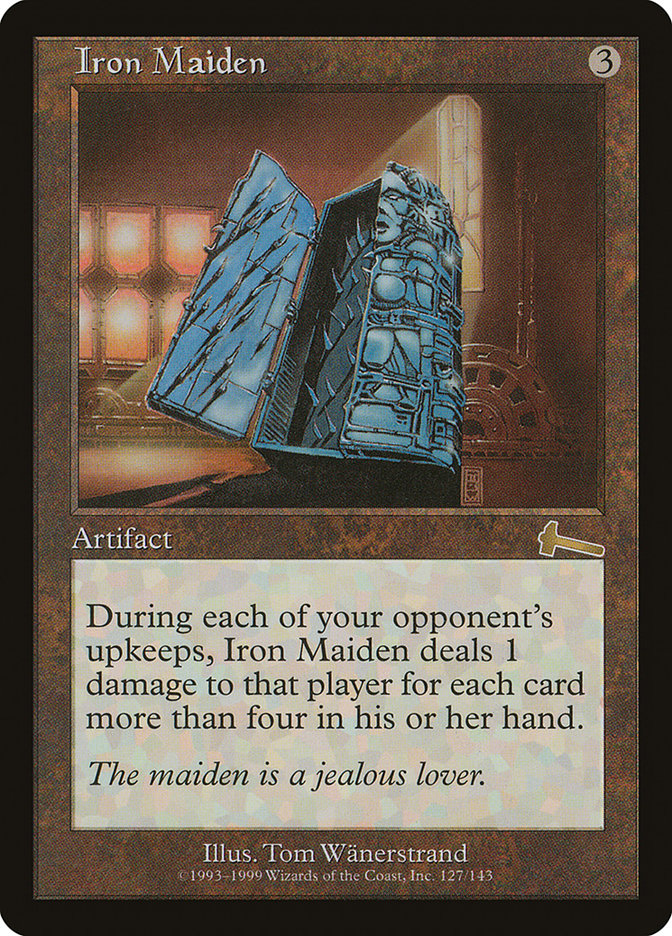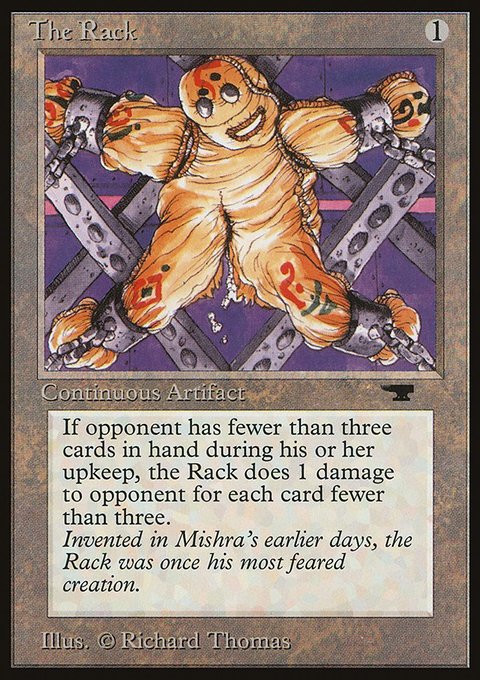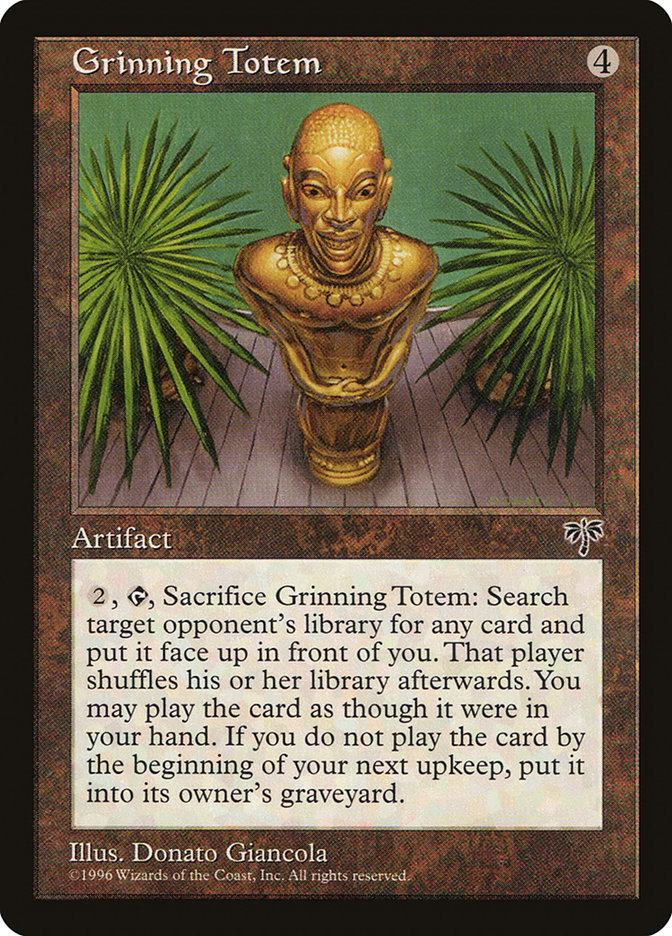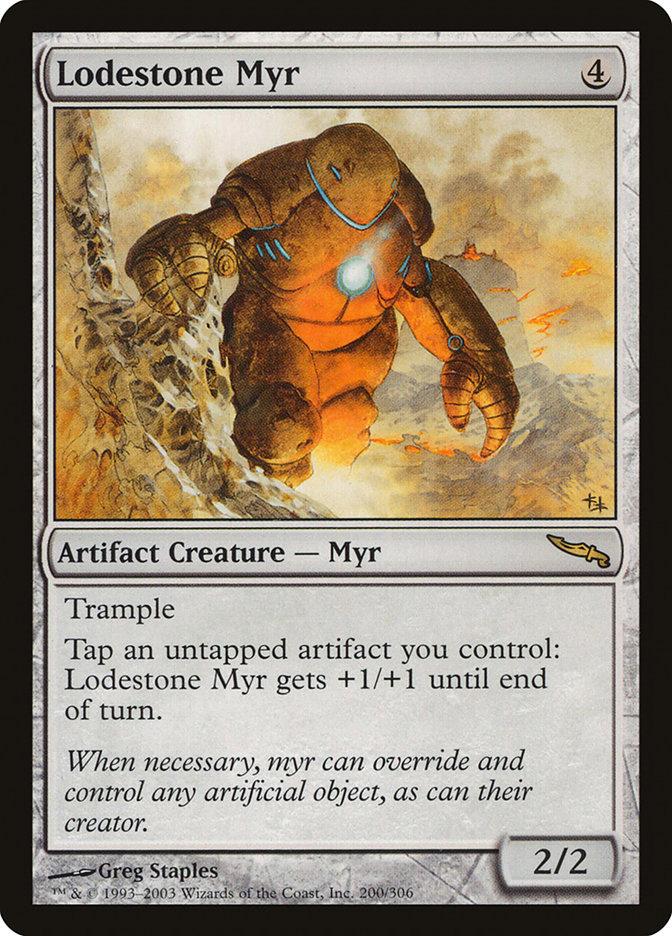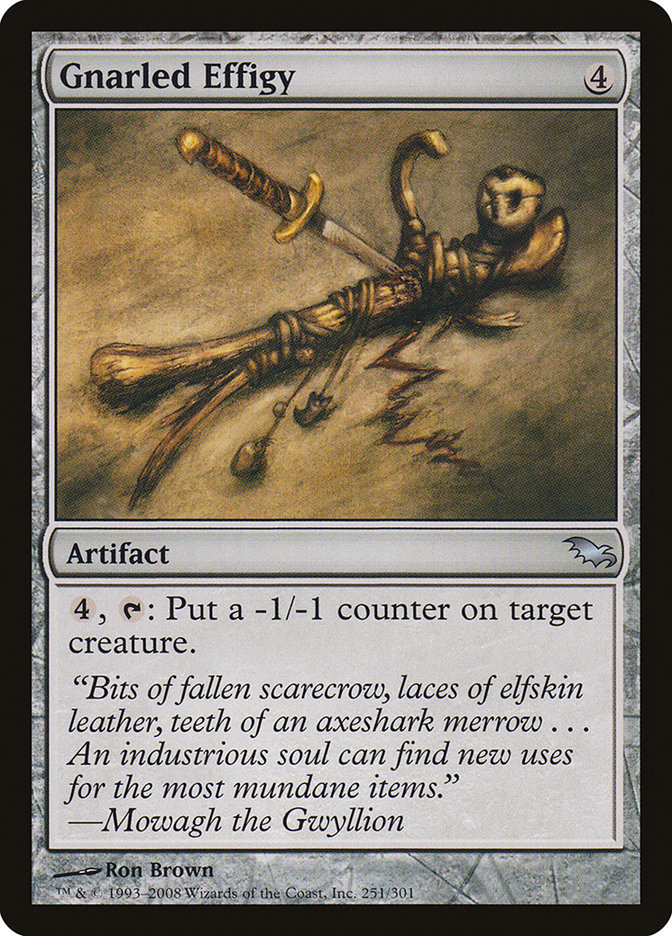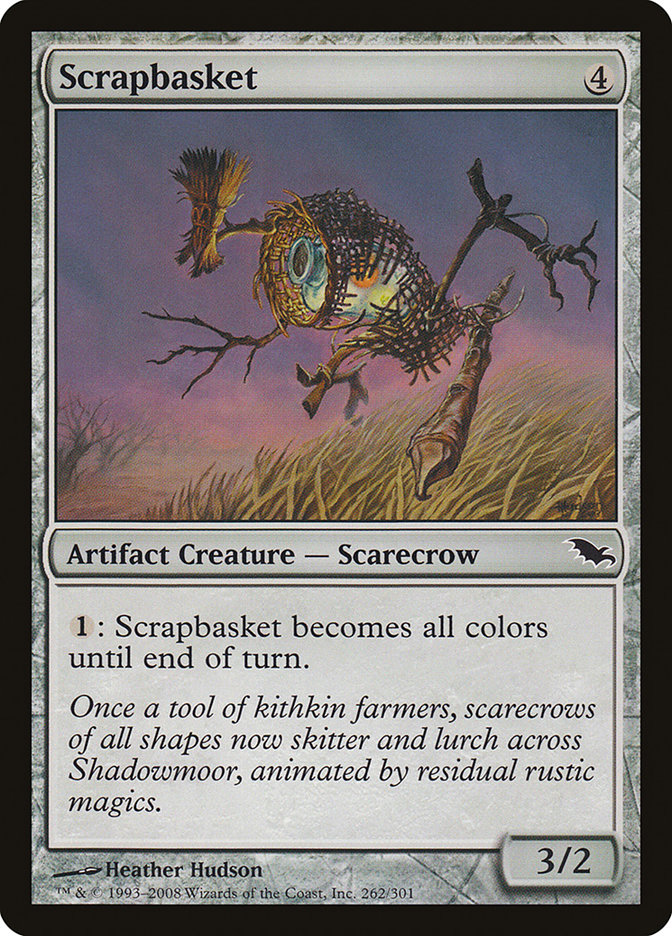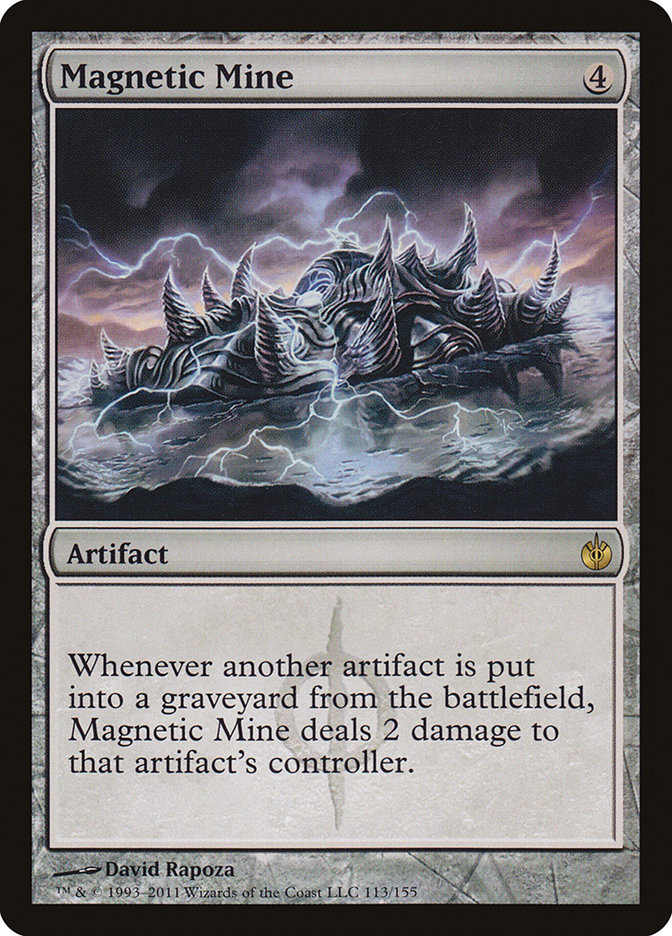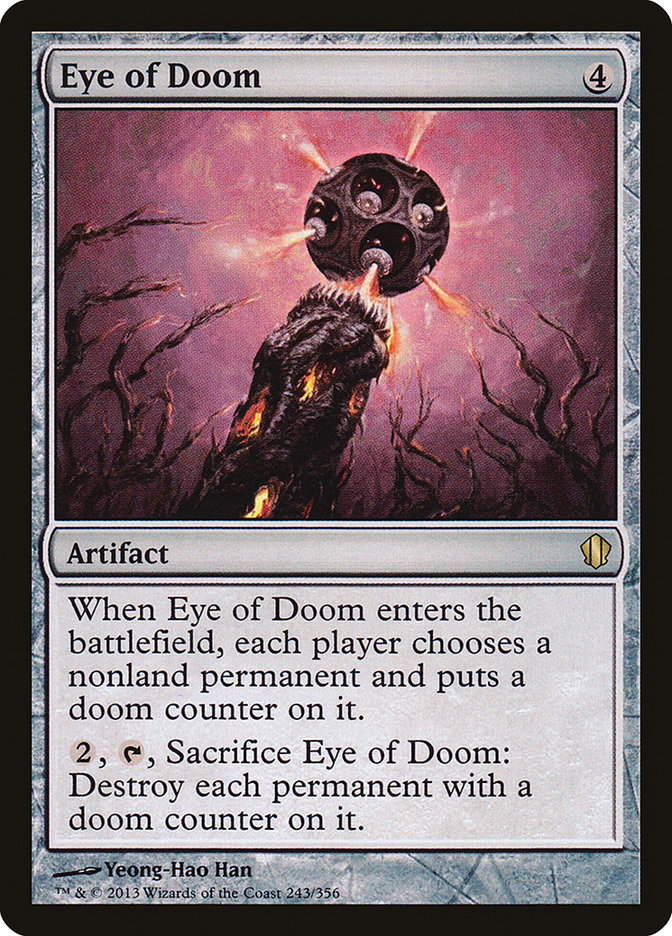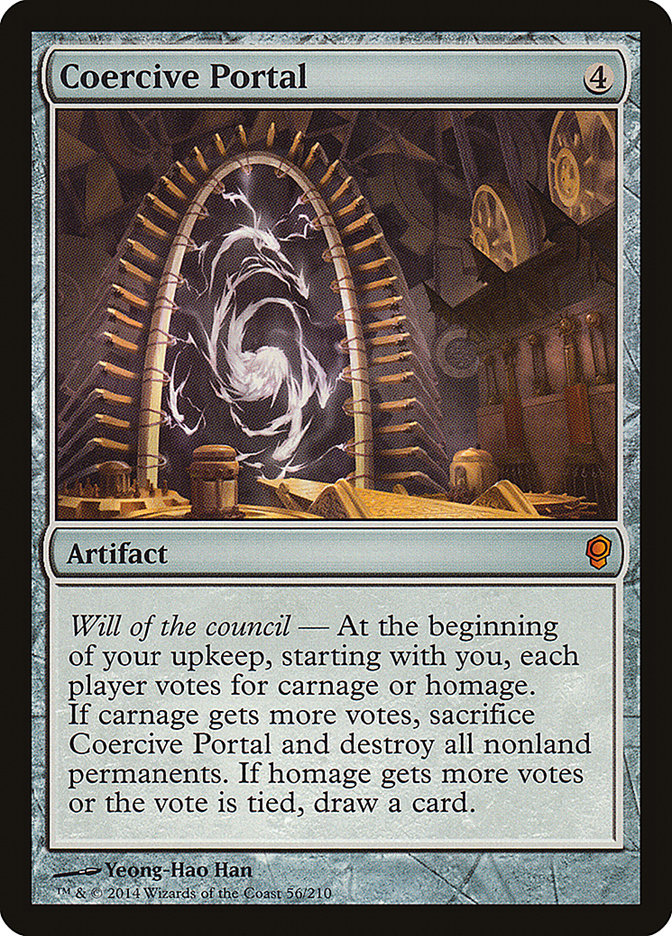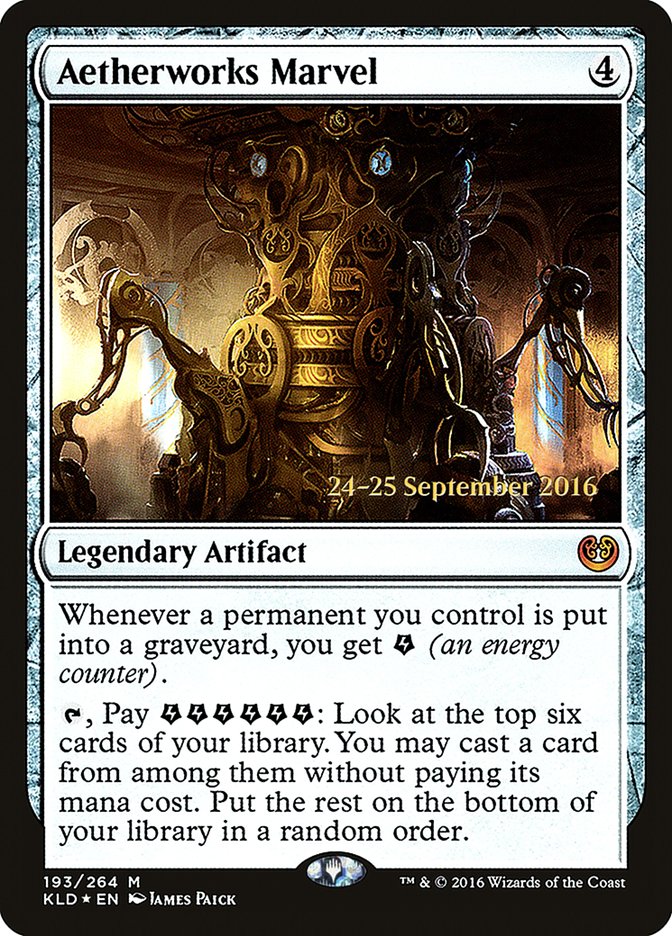Jaula del cráneo Carta MTG
| Colecciones da carta | Lanzado en 2 coleccionesVer todos |
| El coste de maná | |
| Costo de maná convertido | 4 |
| Rareza | Poco común |
| Tipo | Artefacto |
Texto de la carta
Al comienzo del mantenimiento de cada oponente, la Jaula del cráneo le hace 2 puntos de daño a ese jugador a menos que tenga exactamente tres o cuatro cartas en su mano.
Sólo una mente enfocada puede sobrevivirla.
Cartas Similares
En Magic: The Gathering, Skullcage destaca entre la variedad de artefactos diseñados para reducir la cantidad de vida de un oponente. Esta carta puede ser comparada con Iron Maiden, la cual comparte el concepto de infligir daño basado en el número de cartas en la mano del oponente. Sin embargo, Skullcage inflige un daño fijo, mientras que el daño de Iron Maiden escala con la cantidad de cartas.
Al observar The Rack, otra carta comparable, vemos un cambio de perspectiva. The Rack apunta a jugadores con menos cartas en la mano, complementando eficazmente la estrategia de Skullcage contra jugadores con manos más llenas. Ebony Owl Netsuke adopta una táctica similar a Skullcage, infligiendo daño si un oponente tiene un número específico de cartas en la mano. Estas cartas suelen ser utilizadas en conjunto en mazos que buscan controlar el tamaño de la mano del oponente, castigándolos tanto por tener recursos abundantes como escasos.
En general, Skullcage añade diversidad a los artefactos de castigo basados en el tamaño de la mano en el juego, ofreciendo una condición de daño única que puede ser utilizada estratégicamente en tipos específicos de mazos de MTG. Su papel en controlar a los oponentes al dictar el ritmo y el tamaño de su mano es invaluable en juegos donde la manipulación de la mano es clave.
Cartas similares a Jaula del cráneo por color, tipo y coste de maná
Aspectos Positivos de la Carta
Ventaja de Cartas: Skullcage está diseñado para poner a tu oponente en una posición desafiante donde deben equilibrar cuidadosamente el tamaño de su mano. En cada fase de mantenimiento, si tienen exactamente tres o cuatro cartas, Skullcage les inflige dos puntos de daño. Esta presión sostenida y automática a menudo lleva a tu oponente a descartar recursos valiosos para evitar el daño, proporcionándote indirectamente una ventaja de cartas al agotar sus opciones.
Aceleración de Recursos: Aunque Skullcage no acelera directamente tus recursos, la ventaja que crea puede obligar a tu oponente a alterar su plan de juego. Esto puede traducirse en estados de mesa más favorables para ti, ya que podrían necesitar jugar de manera ineficiente para evitar activar el efecto de Skullcage, lo que finalmente te permitiría desplegar tus recursos de manera más efectiva.
Velocidad Instantánea: Skullcage opera con un efecto pasivo y continuo en lugar de a velocidad instantánea. Sin embargo, la amenaza constante de su habilidad activada puede impactar en las decisiones de tu oponente durante su turno igualmente. Podrían tener que lanzar hechizos prematuramente o alterar sus jugadas para cambiar el tamaño de su mano, lo cual puede ser tan impactante como cualquier interacción que puedas tener a velocidad instantánea.
Aspectos Negativos de la Carta
Requisito de Descarte: Skullcage requiere que los oponentes tengan exactamente tres o cuatro cartas en la mano para infligir daño. Esta condición específica puede ser difícil de lograr de manera consistente, especialmente en la fase tardía del juego cuando los jugadores pueden tener menos o más cartas.
Costo de Mana Específico: El costo de mana de Skullcage incluye mana incoloro, lo cual puede no ser una desventaja para la mayoría de mazos. Sin embargo, su inversión de cuatro manas puede ser desafiante en escenarios de juego tempranos, especialmente cuando se necesita una presencia de mesa más rápida.
Costo de Mana Comparativamente Alto: Con un costo de cuatro manas, Skullcage compite con otros efectos impactantes de cuatro manas en el juego. Los jugadores podrían encontrarlo menos atractivo al considerar otras cartas al mismo costo que ofrecen efectos inmediatos o más flexibles.
Razones para Incluir Skullcage en tu Colección
Versatilidad: Skullcage es adaptable a una variedad de mazos de control que buscan penalizar a los oponentes por sus tamaños de mano. Ya sea dirigir un mazo que obligue a los oponentes a robar cartas o uno que mantenga su tamaño de mano bajo, Skullcage puede ser una herramienta para infligir daño de manera consistente.
Potencial de Combo: Esta carta se combina bien con efectos que manipulan tamaños de mano, como forzar robos o descartes. Al combinarse con otras cartas que siguen el tamaño de la mano o cementerios de tu oponente, Skullcage puede convertirse en un punto focal en una sinfonía estratégica que abruma a los oponentes.
Relevancia Meta: En un estado de juego donde los jugadores a menudo intentan maximizar su tamaño de mano para una variedad de estrategias, Skullcage puede actuar como un disuasivo, haciendo que los oponentes piensen dos veces antes de acumular cartas. Esta relevancia lo convierte en una opción astuta para el banquillo o incluso una consideración principal según el flujo del meta actual.
Cómo Vencer a Skullcage
Skullcage se destaca como un artefacto único en Magic: The Gathering, ofreciendo un enfoque fresco para castigar las estrategias de cartas de los oponentes. La carta idealmente va desgastando los totales de vida de los oponentes cuando acumulan cartas en la mano, o cuando se están quedando sin cartas. La efectividad de la jaula depende del número de cartas que un adversario tiene en su mano, infligiendo daño si tienen exactamente tres o exactamente una carta en la fase de mantenimiento.
Para navegar alrededor de las limitaciones de Skullcage, mantener el equilibrio es clave. Requiere una sutileza estratégica, asegurando que tu mano ni se desborde ni disminuya a los conteos activadores. La eficiencia del hechizo se vuelve primordial, con énfasis en lanzar hechizos en curva. Movimientos planificados con destreza evitarán el conteo exacto de cartas que activa el daño de Skullcage. Además, los hechizos de eliminación de encantamientos como Disenchant se convierten en herramientas valiosas, capaces de eliminar rápidamente la Jaula del campo de batalla y perturbar la configuración de control de tu oponente.
En esencia, superar el desafío que presenta Skullcage significa administrar hábilmente el tamaño de tu mano e incluir respuestas de mazos a los artefactos. Mitigar con éxito el daño que Skullcage puede infligir asegura una ventaja en la delicada danza de lanzar hechizos y gestionar recursos inherente al flujo y reflujo del juego estratégico de Magic: The Gathering.
Donde comprar
Si estás buscando comprar una carta MTG Jaula del cráneo de un coleccione específico como Fifth Dawn and Archenemy, existen varias opciones confiables que debes considerar. Una de las fuentes principales es tu tienda de juegos local, donde a menudo puedes encontrar paquetes de refuerzo, cartas individuales y mazos preconstruidos de colecciones actuales y pasadas. A menudo ofrecen el beneficio adicional de una comunidad donde puedes intercambiar con otros jugadores.
Para un inventario más amplio, particularmente de colecciones más antiguos, mercados en línea como TCGPlayer, Card Kingdom y Card Market ofrecen amplias selecciones y te permiten buscar cartas de colecciones específicos. Las plataformas de comercio electrónico más grandes como eBay y Amazon también tienen listados de varios vendedores, lo que puede ser un buen lugar para buscar productos sellados y hallazgos raros.
Además, el sitio oficial de Magic suele tener un localizador de tiendas y listas de minoristas para encontrar Wizards of the Productos con licencia costera. Recuerde comprobar la autenticidad y el estado de las cartas al comprarlas, especialmente a vendedores individuales en mercados más grandes.
A continuación se muestra una lista de algunos sitios web de tiendas donde puede comprar las Jaula del cráneo y otras cartas MTG:
 COMPRAR
COMPRAR BurnMana es un socio oficial de TCGPlayer
- eBay
- Card Kingdom
- Card Market
- Star City Games
- CoolStuffInc
- MTG Mint Card
- Hareruya
- Troll and Toad
- ABU Games
- Card Hoarder Magic Online
- MTGO Traders Magic Online
Ver productos MTG
Impresiones
La carta Jaula del cráneo Magic the Gathering se lanzó en 2 colecciones diferentes entre 2004-06-04 y 2010-06-18. Ilustrado por Ron Spencer.
| # | Liberado | Nombre | Código | Símbolo | Número | Marco | Disposición | Borde | Artista |
|---|---|---|---|---|---|---|---|---|---|
| 1 | 2004-06-04 | Fifth Dawn | 5DN | 151 | 2003 | Normal | Negra | Ron Spencer | |
| 2 | 2010-06-18 | Archenemy | ARC | 115 | 2003 | Normal | Negra | Ron Spencer |
Legalidades
Formatos de Magic the Gathering donde Jaula del cráneo tiene restricciones
| Formato | Legalidad |
|---|---|
| Commander | Legal |
| Legacy | Legal |
| Modern | Legal |
| Oathbreaker | Legal |
| Vintage | Legal |
| Duel | Legal |
| Predh | Legal |
| Penny | Legal |
Reglas e información
La guía de referencia para las reglas de las cartas Jaula del cráneo de Magic: The Gathering proporciona las reglas oficiales, las erratas emitidas, así como un registro de todas las modificaciones funcionales que se han producido.
| Fecha | Texto |
|---|---|
| 01/12/2004 | Skullcage no comprueba el tamaño de la mano cuando se activa, solo cuando se resuelve. |
| 01/12/2004 | La habilidad de Skullcage inflige daño si el jugador tiene cero, uno, dos, cinco o más de cinco cartas en la mano cuando su habilidad se resuelve. |


